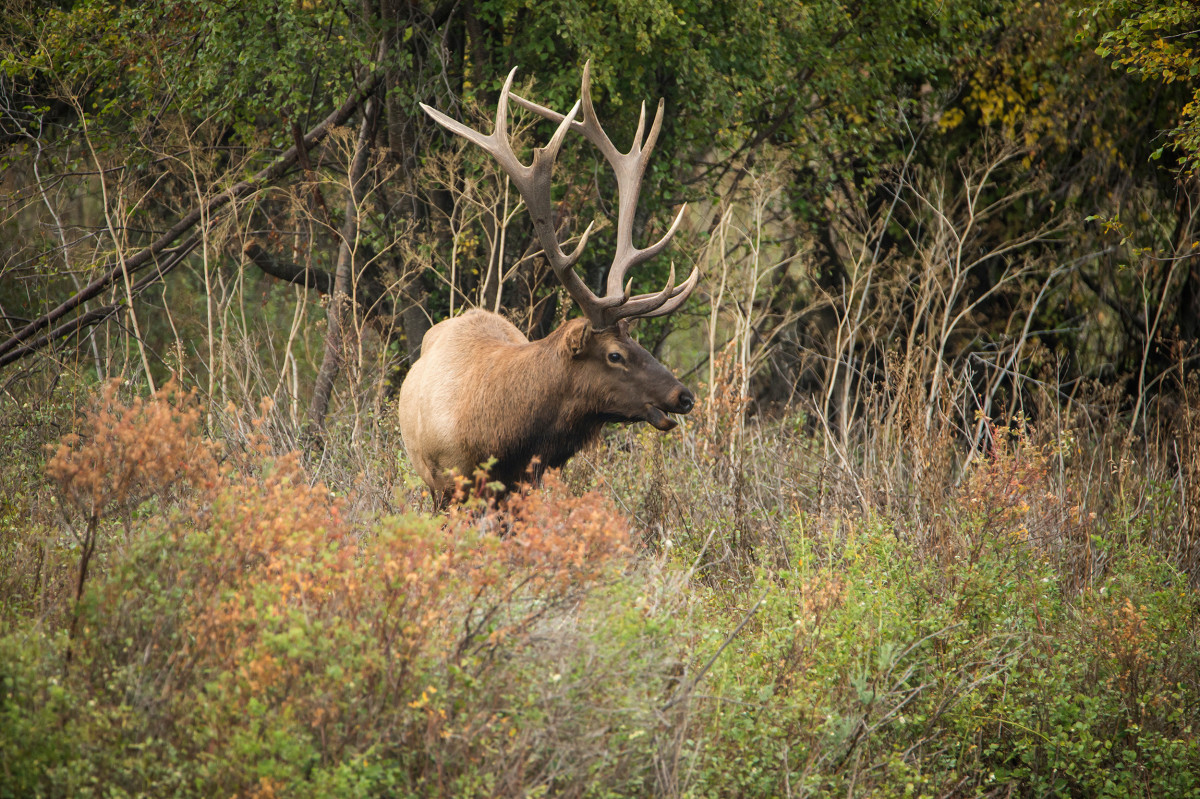
“Beyond aggravating,” is how wildlife biologist Kevin Monteith describes elk hunting in forests where bark beetles have killed most trees and you have to scramble over dead logs at every turn. “There’s no way you’re going to navigate through it quietly if elk were in there, so you get torqued off and you try to get through it as fast as you can.”
But what does beetle kill mean for elk and hunters beyond being a massive pain in the butt to travel through?
Monteith and his colleagues at the Wyoming Cooperative Fish and Wildlife Research Unit have a new study out in the Journal of Wildlife Management showing that beetle kill is less beneficial to elk than expected. Their research is a great example of scientists working with managers to make sure data, not guesswork, informs wildlife management.
Bark beetles have been a native, normal part of our Western pine forests for thousands of years, but the scale of the recent, landscape-scale, tree killing outbreaks is something new. Scientists can generally point to a few things driving it: warmer temperatures ramping up beetle breeding, drought-stressed trees unable to resist the parasites, and a management history that has encouraged dense, uniform forests. That adds up to an unprecedented challenge for managers.
Until now, no one had much evidence about what beetle kill meant for ungulates—but biologists had predicted it might provide a good food source.
“This is one of the first projects to really look at elk in relation to the bark beetle epidemic,” says Tony Mong, a Wyoming Game and Fish Department wildlife biologist who was part of the study.
As Mong traveled the beetle kill forests of south-central Wyoming’s Sierra Madre Range on horseback, he wondered if piles of dead trees were making it harder for hunters to move around and harvest some of the 6,500-8,500 elk living there. Were elk having a harder time getting around too? Or, were dead trees opening new feeding areas for them?
Before the study, biologists looked to similar disturbances, like wildfires or logging, for ideas about how beetle kill affects elk. Basically, when a bunch of big trees die or are cut, the understory opens up, more grass grows and elk tend to move in to feed. The forage benefits of fire are important enough that the popular hunting app onX has a layer for historic burns. Monteith, Mong and their colleagues expected beetle kill would also lead to a smorgasbord of elk food and that elk would spend more time feeding in it.
To find out if that was true, they captured 47 cow elk in the Sierra Madre Range and fitted them with GPS collars. After tracking summer elk movements between 2012 and 2016, they learned that elk stay away from beetle kill during the day even though there is more forage available there. The researchers think the elk may be trying to conserve energy by avoiding the challenge of navigating log jams on the forest floor. Plus, it’s probably too hot for them in the open woods during midday.
“It doesn’t give the benefit, at least at this stage, that a forest fire or other types of forest disturbance would have,” Monteith said. The researchers note that as beetle kill evolves over time and dead trees rot, the story could change. But for now, they describe it as a potential loss of forest habitat for elk.
The researchers suggest land managers consider using salvage logging or prescribed burns to promote the summer habitat conditions elk prefer over beetle kill.
Of course, both of those management tools can be costly, controversial and just plain impractical to deploy over vast acreage. With something as large-scale as the bark beetle outbreak, it may come down to recognizing that many forests aren’t the same as they used to be.
“It becomes a matter of us as hunters perhaps acknowledging that these landscapes and habitats have changed dramatically, and they’re probably going to continue to change for a number of decades to come,” Monteith said.
This is where someone who has looked at beetle kill during elk season and thought, “I know they’re in there, but I’m going to lose my mind tripping over deadfall” may have some questions. Isn’t this story—which is about summer habitat use—going to change once hunting pressure ramps up?
Monteith, Mong and their colleagues have that covered, too. The recent study is part of a larger project that includes volunteer hunters carrying GPS units so scientists can track their behavior.
They’ll be publishing that work in the coming year, so there’s more to come on how elk and hunters interact with beetle kill. But for now, as you can guess, elk are probably going to make some different habitat choices as hunting season unfolds.
Feature image via John Hafner.






